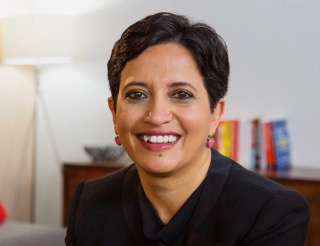Building a Venture Scale Enterprise AI Company from Spain: David Villalon, CEO of Maisa (Part 2)
Sramana Mitra: Double-click down on where you were — what use case you were applying this knowledge processing unit workflow to?
David Villalon: In the early days, that was one of the biggest questions we had to solve.
Sramana Mitra: For your startup, that’s always the biggest question you have to solve.
David Villalon: I completely agree. In the early days, I’ll tell you the journey. My co-founder comes from engineering, I come from product, and we didn’t start with a specific use case in mind. We wanted to solve a technical problem — hallucinations and lack of reliability. Once we solved that, we had a powerful engine and asked ourselves, “What do we build with this? Cars? Planes? What do we do?”
We spent about a year exploring possibilities because the technology could be used in many ways. We needed to figure out where people found value. Eventually, we saw a market opportunity in automation, specifically in knowledge work tasks and complex processes that existing tools couldn’t handle.
That’s why we built our product, Maisa Studio. We saw potential in the robotic process automation (RPA) market — UiPath, Power Automate, and others — but those platforms are expensive and time-consuming. Modeling processes and building automations require significant technical expertise.
We realized our technology could make automation accessible to any “citizen developer” — finance professionals, accountants, HR staff — people who aren’t technical but perform repetitive, structured tasks. They could define a task, and our system would create a worker to execute it reliably.
This reliability is what companies expect from RPA. We addressed two problems: the high cost and long development time of automations, and the underserved market of knowledge worker automation. These are people doing tasks like financial reconciliation, account closing, data extraction, data consolidation, and analysis. The market is enormous.
Today, our product enables companies to automate these knowledge work processes effectively.
Sramana Mitra: Let’s go back to that year when you were figuring out how to do this technically. Were any customers involved, or were you just doing it in your lab?
David Villalon: In the beginning, we did involve customers. We talked to a lot of people — from CTOs of large banks to finance controllers at startups and HR recruiters at mid-sized companies. We didn’t know yet who our ideal target was, so we tried to learn from everyone.
Sramana Mitra: All in Spain?
David Villalon: No, in the US as well. We were trying to understand the problem space — what problems we should address.
We eventually decided to focus on B2B. At one point, we considered going B2C, but we realized it would be more complex and that large players would dominate that space. Also, the technology’s value was clearer for businesses, especially in regulated industries.
Sramana Mitra: And you could make more money selling to enterprises.
David Villalon: That’s true, but it wasn’t just about the money. It was about the problem space, the market’s evolution, and where we believed long-term winners would emerge. Competing in the consumer space early didn’t make sense.
So, how did we get to the product we have now? In the beginning, we had an early UI. When we demoed it, people would ask, “What is this for? How do I use it?” Many didn’t understand its purpose.
We learned a lot from those conversations. After every meeting, we’d make changes to the product — literally coding and iterating immediately. With each new client conversation, we refined it further. Eventually, people started asking, “How much is this?” That’s when we knew we were on the right path — we had found something valuable.
This segment is part 2 in the series : Building a Venture Scale Enterprise AI Company from Spain: David Villalon, CEO of Maisa
1 2 3
Featured Videos
Can 1M/1M Help Me Raise Money?
How Does 1M/1M Democratize Entrepreneurship Education?
How Does 1M/1M Democratize Management Consulting?
When Is The Right Time To Join 1M/1M?
Can 1M/1M Help Me With Business Development?
Can 1M/1M Help Me With Market Sizing?
Can 1M/1M Help Me Validate My Product?
Will I Have Private 1-on-1 Sessions In 1M/1M?
How Does 1M/1M Help Entrepreneurs Connect With Silicon Valley?
Mentoring or Consulting?
Why Does 1M/1M Charge $1000 a Year?
Why Does 1M/1M Partner With Local Organizations?
Why Don\’t Mentoring Networks Work?
Why Is It Important To Study With 1M/1M Now?
Dan Stewart Story
Vikrant Mathur Story
